Digital Marketing Strategy | A Singapore Guide
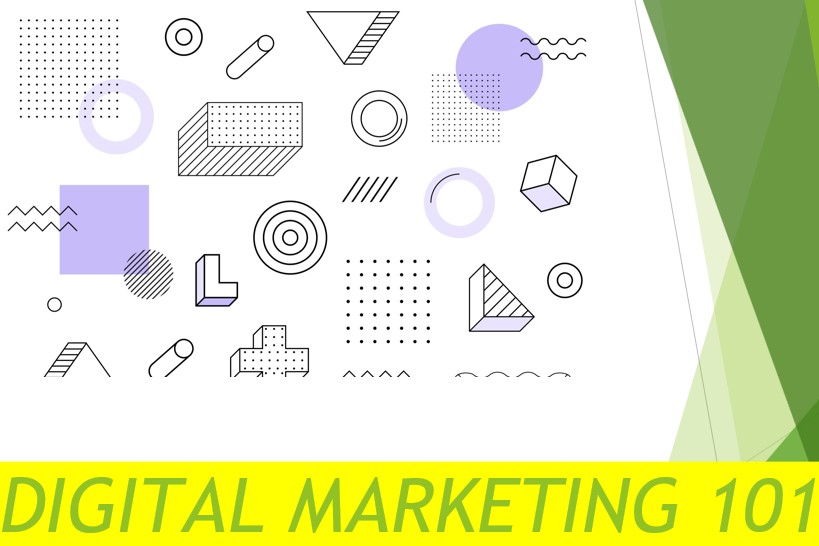

Gary Illyes of Google offers advice on how to use Google's best practices to outrank your rivals. He'll give you pointers on SEO and all things Google Search Algorithm.
Introduction to domain:
What is a Digital Marketing Strategy
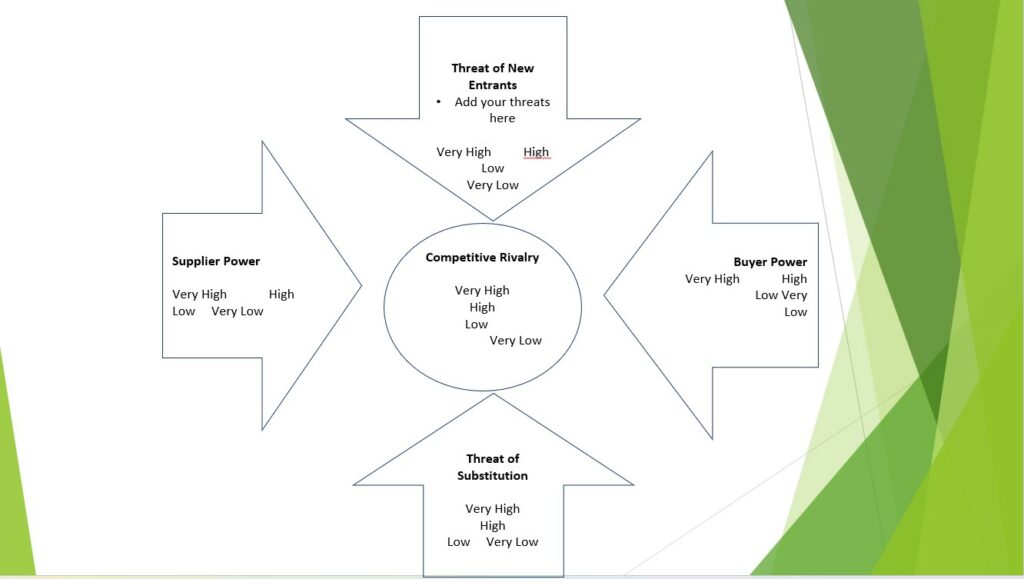
Porter’s Five Forces in Digital Marketing Strategy
A digital marketing strategy is a plan for creating an online presence using tools like social media, paid search,
organic search, and other
web-based platforms like your website.
What is a digital marketing campaign?
A digital marketing campaign is the set of activities you undertake to reach your goals. You might think of it as a big project — one that requires planning, execution and monitoring. But there’s no reason why you shouldn’t break down each element into smaller chunks. In fact, doing so makes it easier to see what needs to happen next, and gives you more control over the process.
Buyer Persona

Buyer Persona
Build your buyer personas.
Your buyers are people like them. They’re real people who buy things every day. You know what they want, where they spend their money, and why they choose one product over another.
But do you really know your customers? Do you know their hopes and dreams, fears and frustrations? What motivates them to make decisions about buying products and services? If you don’t know your buyers, you’ll never meet them. And without meeting them, it’s impossible to design a successful marketing campaign.
So start building your buyer persona profiles today. Start creating detailed descriptions of your ideal customer. Then use those profiles to guide the development of your marketing strategies.
Understand Your Buyer
- Analyse the typical buyer journey for your product / service
- Competitive Market (high supply, high demand): What are the typical first entry channels for buyers
- Non competitive market (low supply, moderate / low demand): If demand low: how would a potential buyer get in touch with the brand first (inbound / outbound?)
- How long does it take from first brand touch point to actual conversion?
Choosing A Domain Name
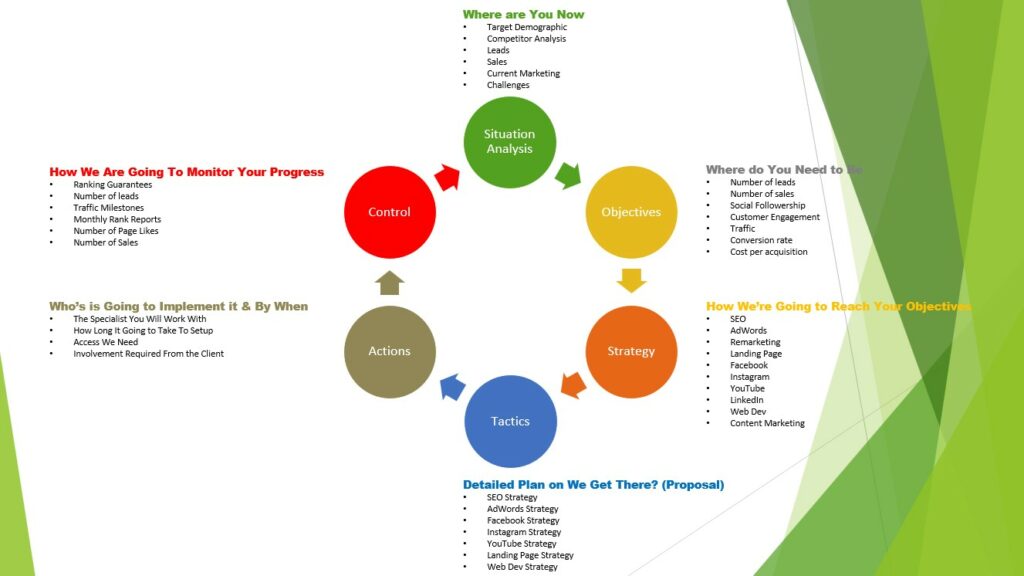
Situational Analysis: SOSTAC Framework
A good digital marketing strategy will make sure that you are reaching out to your audience effectively. This includes understanding how much money you need to spend, where you should focus your efforts, and whether it makes sense to use paid advertising versus free social media campaigns. In addition, you’ll want to consider how you’re going to measure success. Here are some steps to take to devise an effective digital marketing strategy.
1. Conduct a SWOT Analysis
Before devising a digital marketing strategy, you’ll want to do a SWOT analysis. This involves looking at your strengths, weaknesses, opportunities, and threats. By doing so, you’ll gain insight into your current situation and identify ways to improve. For example, if you don’t have a strong customer base, you might decide to invest in paid ads. If you lack expertise in certain areas, you could hire someone to assist you.
2. Set Your Goals
Once you’ve identified your strengths and weaknesses, you’ll want to determine your goals. What do you hope to achieve? Are you trying to sell more products? Increase traffic? Generate leads? These questions will help you define your objectives.
3. Identify Target Audiences
You’ll also want to identify your target audiences. Who exactly are you targeting? Is there one group of people that you’d like to attract? Or are you hoping to appeal to everyone? Once you know who you’re aiming to reach, you’ll be able to tailor your messages accordingly.
SMART GOALS
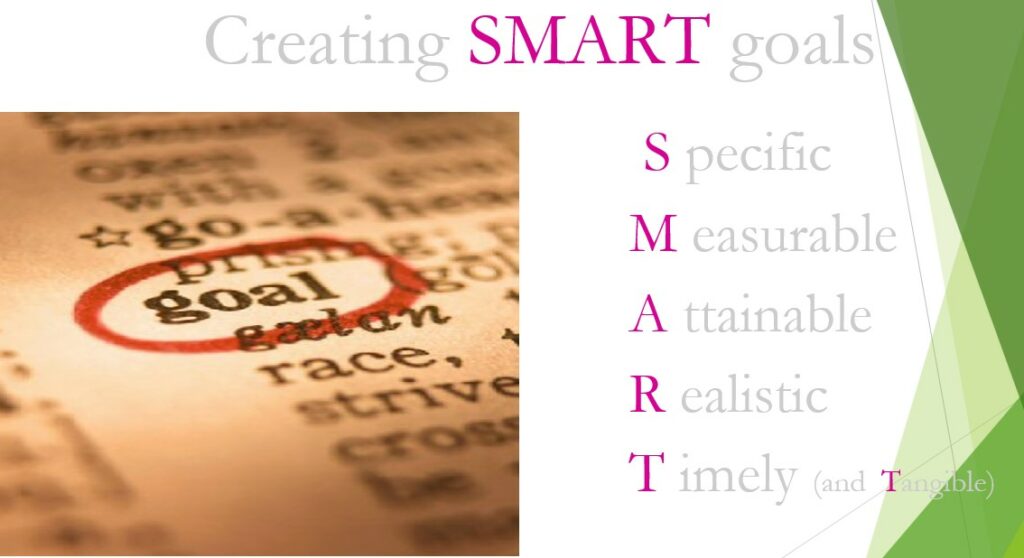
SMART GOALS in Digital Marketing
SMART stands for Specific, Measurable, Attainable, Relevant, and Timely. These five guidelines help you set up SMART goals for your business. If you want to improve your marketing efforts, it pays to know what you’re trying to accomplish.
The acronym “SMART” is used in many different ways. For example, a smart phone is one that knows how to do things like turn itself off and on, check email, take pictures, play music, and even tell jokes. In business, we use the term SMART to describe goals that are specific, measurable, achievable, relevant, and timely — or simply put, goals that are well thought out.
Setting SMART goals helps ensure that your marketing plan stays on track and effective. You don’t want to spend money on something that doesn’t work. And setting realistic goals helps keep you motivated throughout the process.
Here are some examples of SMART goals:
Specific – A goal must be specific enough to allow you to measure progress toward achieving it.
Measurable – Your goal needs to include a way to determine whether you’ve met it.
Attainable – You’ll need to define exactly what success looks like.
1. Reach
The most obvious reason why social media is so powerful is because it allows you to reach millions of people around the world. With just one post, you can easily reach thousands of people within minutes. This gives you a huge competitive edge over your competitors since you can instantly communicate with your audience without having to pay expensive advertising costs.
2. Engagement
Another major benefit of social media is that it helps you engage with your target market. By interacting with your followers, you show them that you care about their opinions and feedback. You give them something to talk about and make them feel like they matter to you. This creates trust and loyalty among your followers and encourages them to continue engaging with your brand.
3. Brand Awareness
A third key benefit of social media is its ability to help you spread brand awareness. When you start posting regularly on social media platforms, your fans begin noticing your posts and seeing how often you post. They learn that you’re always sharing interesting things on your blog, and they might even follow you on social media. As a result, your brand becomes much more visible to your target market.Influencer Marketing
Influencer marketing is another channel for brands to connect with customers. Brands are increasingly turning to influencers to promote products and services. They often use influencers to build brand awareness, increase product sales, and generate leads. In fact, according to Forbes, influencer marketing accounts for $1 billion in ad spend in 2018.
A lot of people trust recommendations and endorsements from friends, family, online communities, and experts. This makes influencer marketing one of the most effective ways to reach potential customers.
You can create sponsored posts on Facebook, Instagram, LinkedIn, YouTube, Twitter, Snapchat, Pinterest, and even Reddit. Sponsored posts allow you to target specific audiences based on interests and demographics. For example, you could pay someone to post about your product on Reddit and target people interested in technology.
Omni-Channel Marketing
In fact, there are three types of omnichannel digital marketing programs:
1. One-channel programs – These are the traditional digital marketing campaigns where you focus on just one channel like social media.
2. Multichannel programs – These are campaigns that combine multiple channels into one program. For example, you could use email, Facebook ads, and Twitter ads to promote a single event.
3. Omni-channel programs – These programs are designed to integrate all channels together. They might involve creating a landing page for a specific product, and then promoting that page across multiple channels.
The key to success with omnichannel programs is to understand that each channel will require different tactics. You’ll want to look at each channel individually to see how it performs and whether it makes sense to continue running it.
How Will Digital Marketing Channels Grow
Digital marketing is one of the most important parts of any marketing plan. But how do you know what type of digital marketing is best for your brand? Here are some questions to help you decide:
What does my audience want? What information do I provide to my customers? How do I keep them engaged?
Where do I find my target market? Where do they hang out online? Who are my competitors? Do they use social media? If so, where?
Who am I trying to reach? Are there specific demographics I’m targeting?
Do I offer products or services? If so, what types? What price points?
How do I measure success? What metrics tell me whether I’m doing well?
Does my current marketing plan work? Is it effective? Does it meet my goals?
How Important is Digital Marketing Today?
Over 75% of US advertising spend will go towards digital media, according to eMarketer estimates. This includes TV, radio, print, outdoor, social media, mobile apps, etc. Digital marketing will account for $178 billion in 2018, up from $145 billion in 2017.
Social Media Marketing continues to grow in importance. In fact, it grew faster than any other form of online marketing in 2016. Facebook alone accounted for almost half of all social media traffic. Twitter, Instagram, LinkedIn, YouTube, Snapchat, and Pinterest are also growing fast.
Video is still important. As we move into 2018, video is expected to become even more prominent. We’re already seeing this trend play out in the way consumers watch videos. Consumers are watching more videos on smartphones and tablets than ever before. Smart TVs are becoming popular again, too. And smart speakers like Amazon Echo and Google Home continue to gain traction.
The challenges of digital marketing
Digital marketing is constantly evolving. New technologies emerge every day. What worked yesterday might not work today. And what works today might not work tomorrow. So how do we keep up with it all? Here are some tips to make sure your digital marketing strategy stays relevant and effective.
1. Focus on the customer experience
2. Create a clear brand identity
3. Use data intelligently
4. Make it visual
5. Build trust
6. Be human
Assess if Digital Marketing can support achieving sales objectives
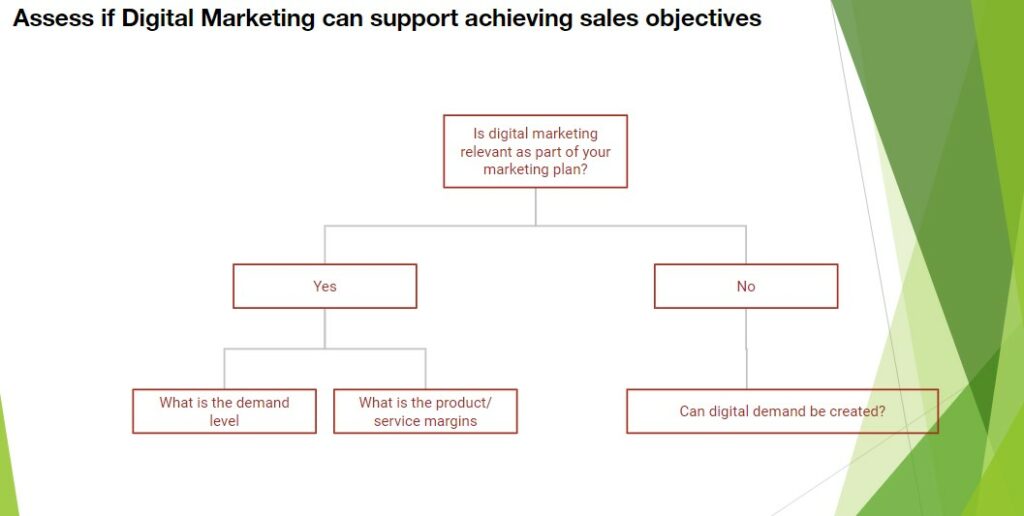
Digital Marketing Qualifying Questions
- Yes: What is the demand level (Search Volume, Share of Voice distribution across market leaders etc.) and what are the product / service margins (Question here: What $$ is the business ready to invest in each product / service >> Type of marketing channels / ad formats will be limited) and even if the $$ investment is low due to the nature of the product / service (lower price class) – Understand the Life time value and take this into consideration when planning your Marketing strategy — I think the Life time value is already covered in your presentation.
- No: Can Digital demand be created?
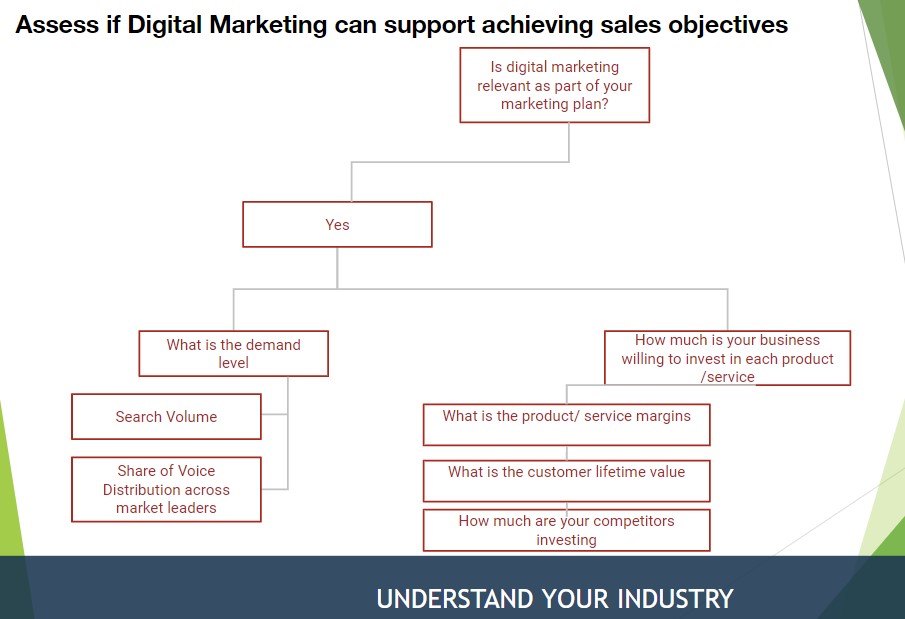
If Sales Objectives Aligns With Digital Marketing
Digital Marketing Sales Funnel

Digital Marketing Full Sales Funnel
After laying down all your strategic plans, each channel should be aligned in terms of different touch points of the campaign.
In a perfect Facebook Ad campaign for instance, these are the important considerations:
Market Objective
-Ad Audience
-Ad specific to an audience
Testing
Target, ad, landing page, offer
Optimization | AB Testing
Scaling
Reach a larger audience but not affect results
Maintanence
Prevent ad fatigue and budget allocation for testings
Funneling
-Lead captivator (Give free)
-quick sale
-core offer
-sales escalator
-profit multiplier
Review & Testing Different Ad copies
1. Do u know
2. Benefits
3. Reputation
4. Risk Reversal (Such as Guarantees)
4. Call-to-Action
5. Urgency (Time offer)
A digital marketing strategy is a plan for creating an online presence using tools like social media, paid search, organic search, and other web-based platforms like your website.
Perform a buyer persona, understand your target audience, and perform SWOT analysis
